Summary
Now get older by Levanger residential and activity center meet the very young. It seems to do well for everyone involved.
By Marthe Haugdal/ National Center for Culture, Health and Care (Levanger)
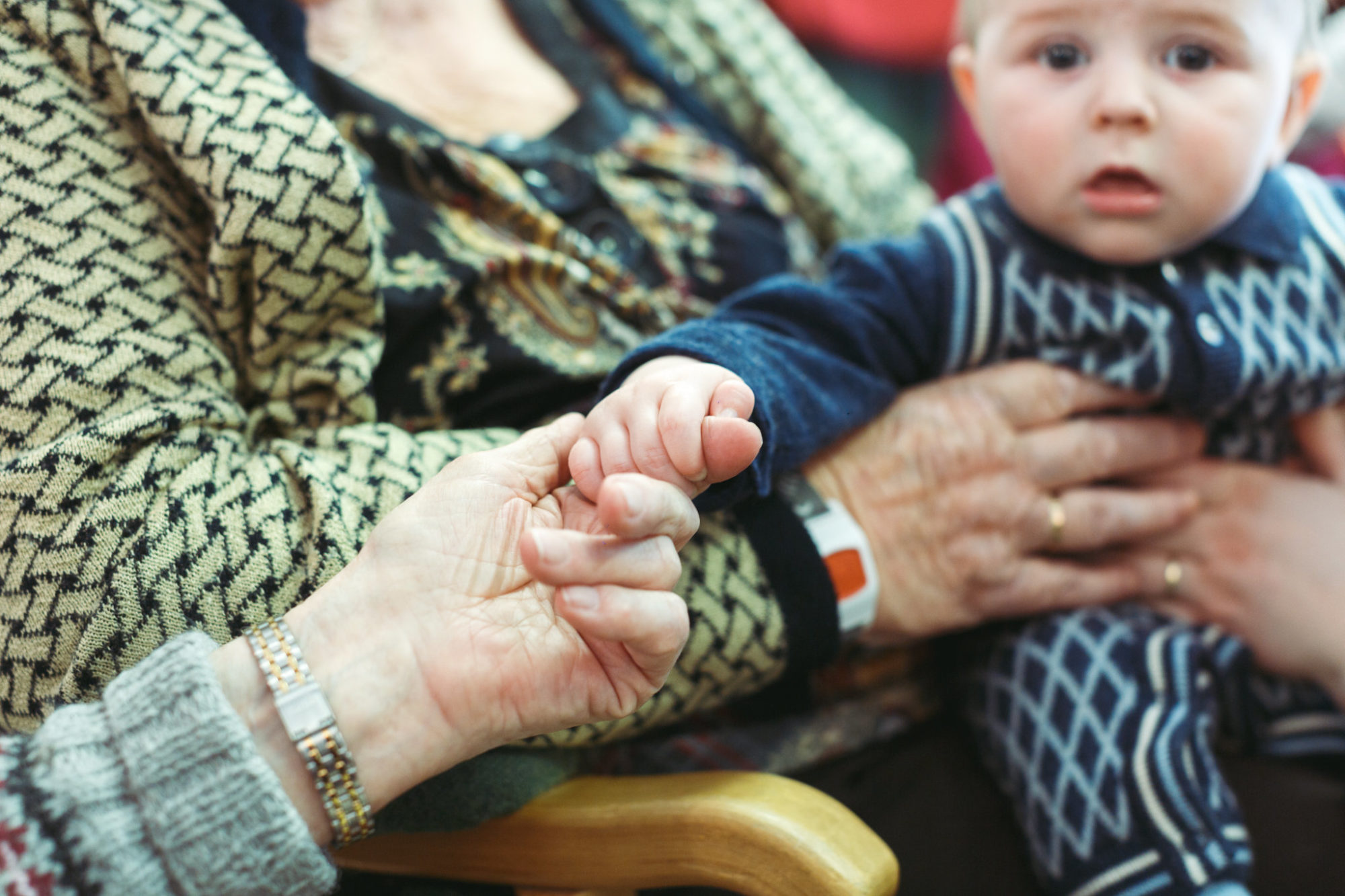
A dark fringe emerging from the baby carriage at Levanger residential and activity center. Oskar (8 mo.) Has just woken up. Now he and mum Jeanette Fossmo visit day care and be with the older ladies who just finished the first cup of coffee this morning.
Joining them are Magne OLAI (10 mo.) And mum Mona Kleven. Recreational therapy Kari Viken and Hanne Aas Sten Haugmo want babies and moms welcome and shows where they can park prams.
One of the older ladies halt in what she has to pass the newly arrived guests. She takes a deep breath and smiled at him who has just woken up. Two pairs of eyes meet. Errand must wait.
– I have cared for people like you all my life I, she said, stretching out his arms toward Oskar.
She turns toward Recreational therapy and says she worked with premature babies in the hospital in his active career. She has obviously not forgotten ancient arts.
Called the volunteer center
Jeanette Fossmo wanted to do something for others in addition to being together with Oskar in parental leave. She read about the concept “Visits Baby” in an online newspaper and contacted Levanger volunteer in the hope that there was also such opportunities in the community in Levanger Municipality.
And as I said then done. It was not many days before Recreational therapy Viken and Aas Sten Haugmo at Levanger residential and activity center had agreed to facilitate that babies can visit the elderly at day care.
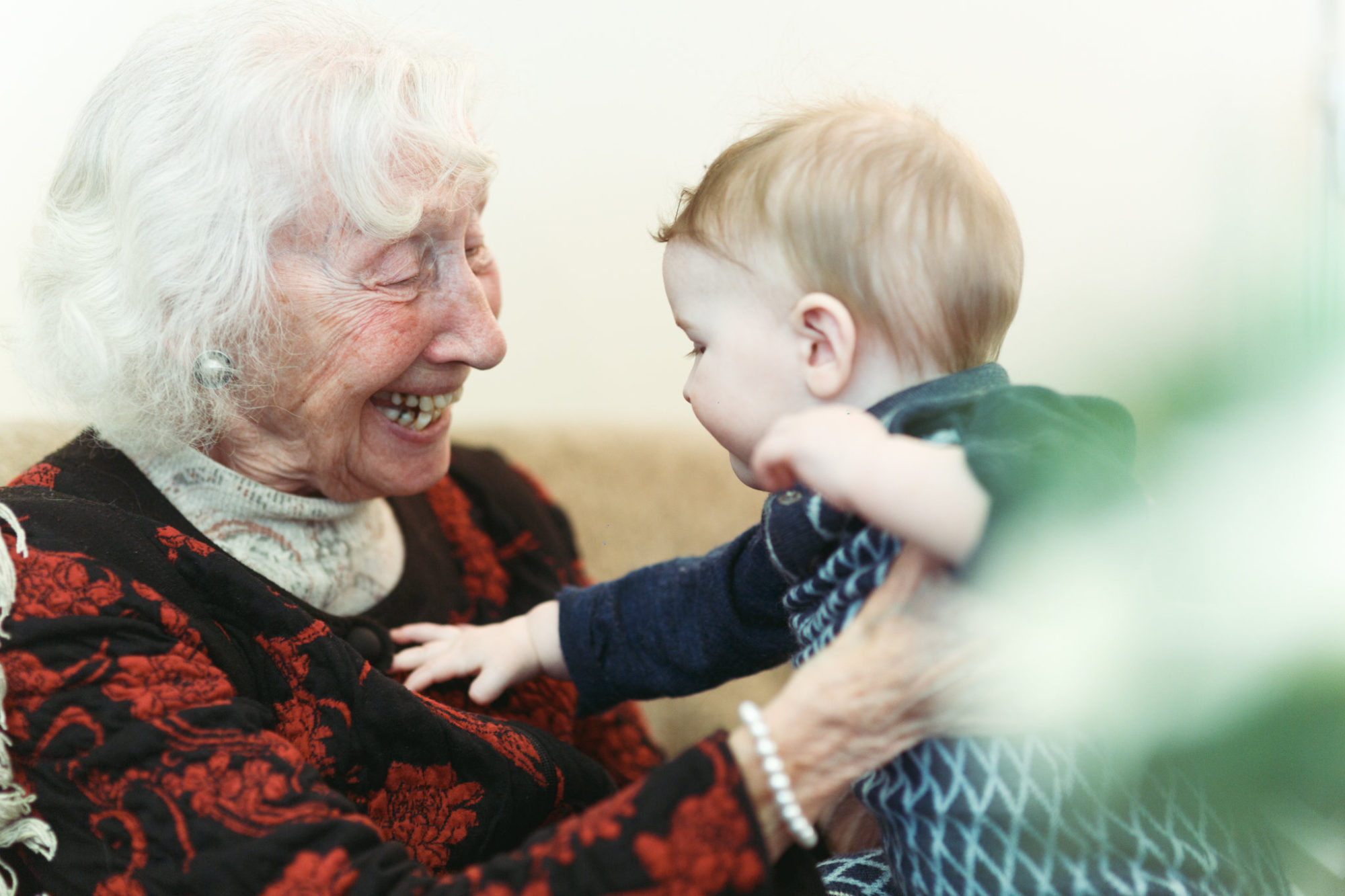
Recreates memories of life
Although Recreational therapy in Levanger just getting started with visiting baby, they see already that this is positive for those who visit the day center, but also for their everyday work.
– When the babies come to visit recreated memories of their own lives. The older recalls personal experiences and chatted start walking, says Kari Viken, occupational therapist at Levanger Residential and activity center.
– So it also gives us Recreational therapy an added pleasure, says Hanne Aas Sten Haugmo.
– Fun for all
Magne OLAI (10 mo.) Wave your arms and grabs his hand to Lovise that fits comfortably in a green easy chair. 90 years separates the two. Nevertheless, the contact instant.
It is good that my mom Mona Kleven stays close, although Magne OLAI most of the time has your full attention on Lovisa nonsense talk. 90-year-old wedges his stomach with one hand. He shrinks together and laughing.
– It’s fun for everyone and I think everyone here can benefit from it too, says mom Mona Kleven.
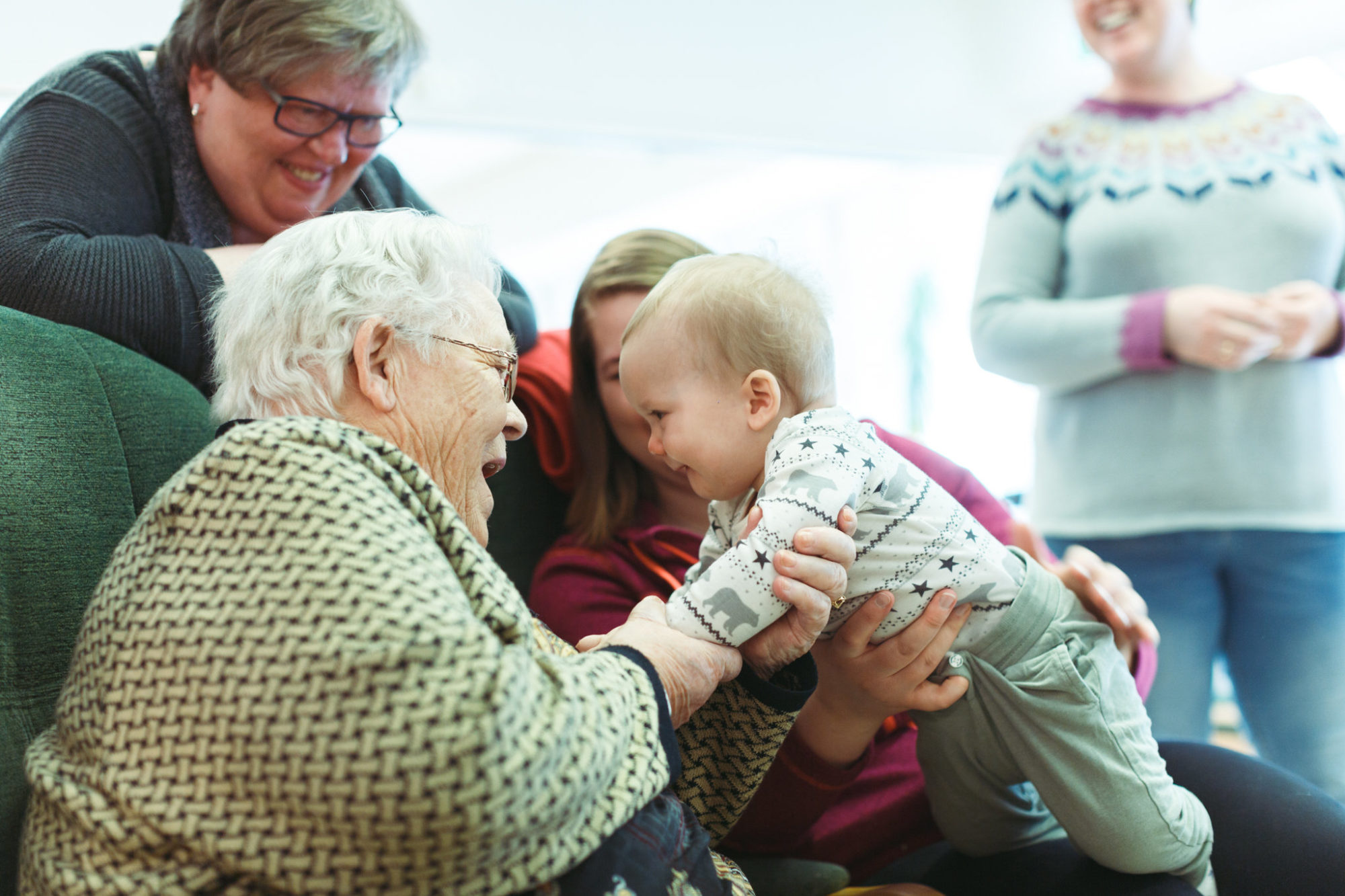
Sense Stimulation may help to slow the progression of dementia
Odd Håpnes, general manager at the National Center for Culture, Health and Care believes the concept visit baby is important for sensory stimulation people need, and that it can have repercussions far beyond the fact that it’s nice to meet.
– In communication between people on baby visit, we can observe eye contact, joy, humming, singing and laughing, and we recognize the importance this has for all involved. This is a great form of sensory stimulation that is essential to safeguard the cognitive abilities, whether they have a disease or not.
– Sense Stimulation is nourishes the brain. Research shows that systematic sensory stimulation may help slow the development of dementia, says Håpnes.
Levanger Municipality is part of the partnership to the National Center for culture, health and care. Northern University, HUNT Research (Faculty of Medicine and Health Science, NTNU) , Helse Nord-Trøndelag HF, Trøndelag county is also in partnership.
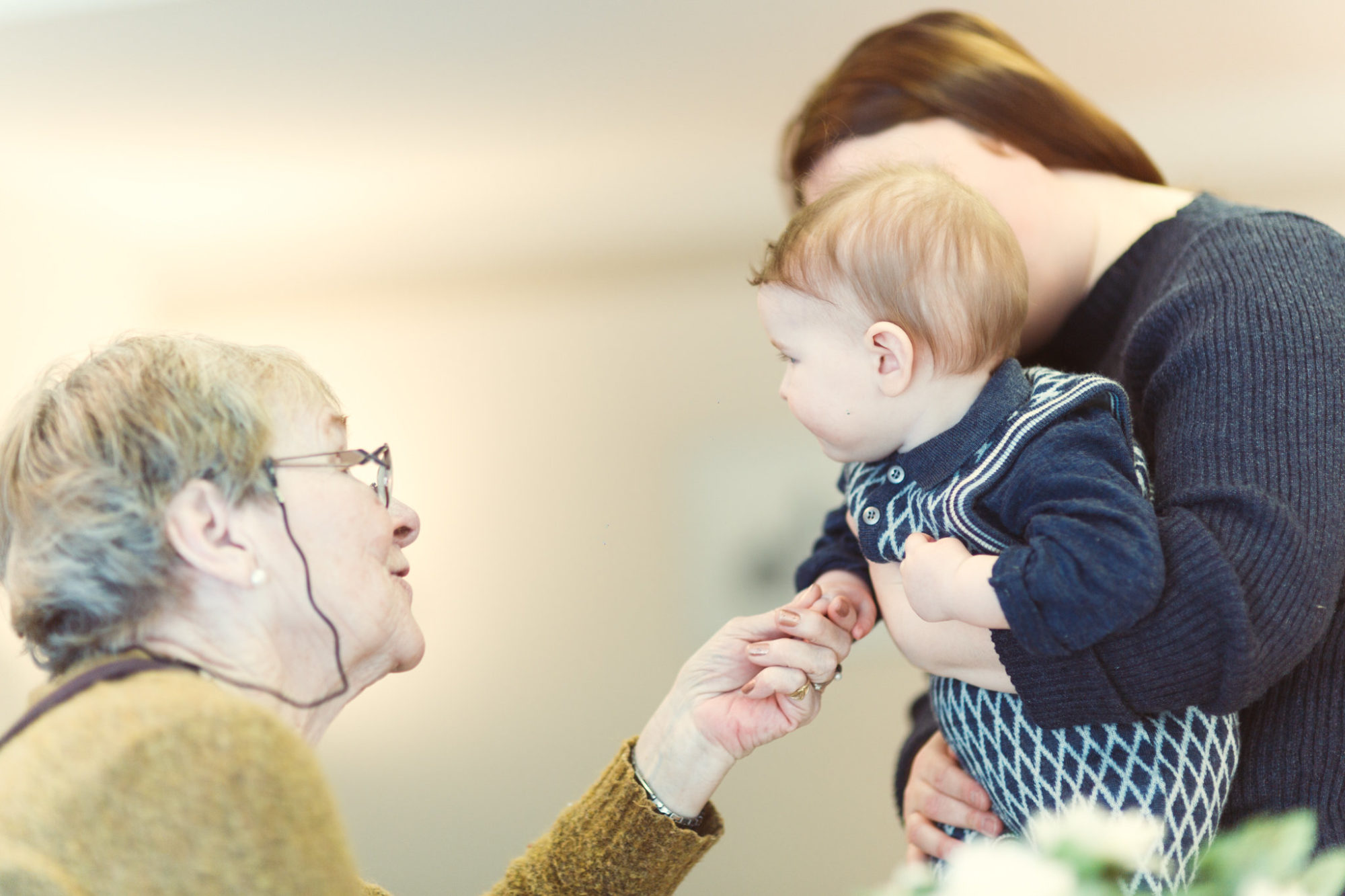
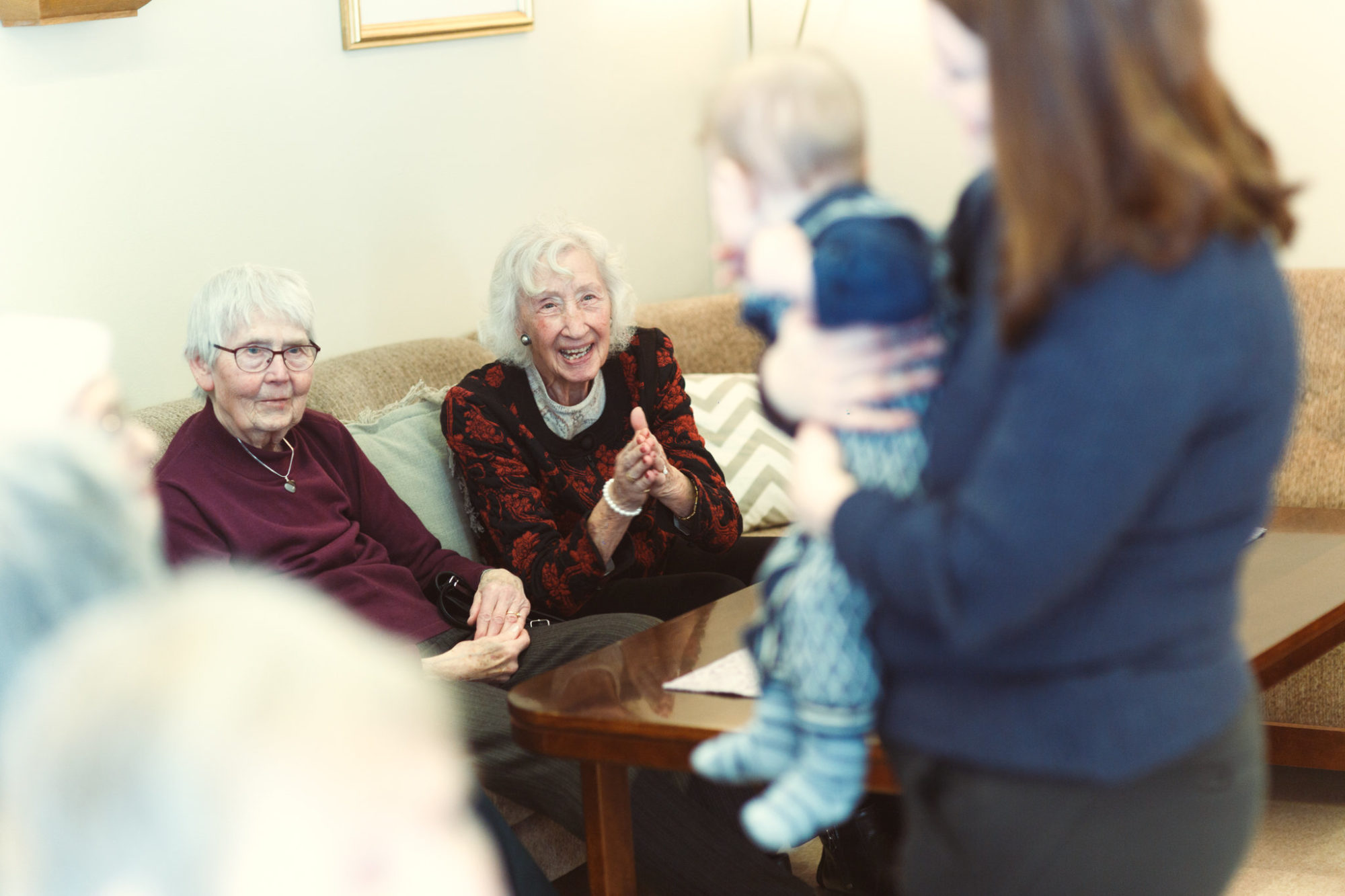
Key facts
Main target group: Older people with chronic health conditions or disability
Other target group(s): This is also a meeting place between generations
Sector(s): Health
Desired outcome for older people:
Meet their basic needs
- Dementia
- Intergenerational activities
- Other

